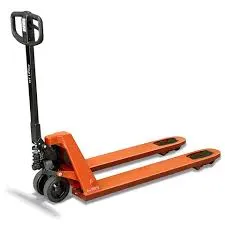


The Importance of Fall Restraint Equipment in the Workplace
In various industries, especially those involving construction, maintenance, and aerial work, the need for safety is paramount. One of the key components of workplace safety is the use of fall restraint equipment. This equipment is vital in preventing accidents that can result in serious injuries or fatalities. Understanding the significance of fall restraint equipment and its proper usage can create a safer working environment for employees.
Understanding Fall Restraint Equipment
Fall restraint equipment refers to systems designed to prevent workers from falling from heights. Unlike fall arrest systems, which catch individuals after a fall has occurred, fall restraint systems are intended to keep workers from reaching the edge of a potential fall hazard. Common types of fall restraint equipment include harnesses, lanyards, anchorage points, and guardrails. These systems work together to limit the movement of a worker and keep them within a safe distance from edges and openings.
Importance of Fall Restraint Equipment
1. Preventing Injuries and Fatalities The primary reason for utilizing fall restraint equipment is to safeguard employees from falls. According to the Occupational Safety and Health Administration (OSHA), falls are one of the leading causes of workplace injuries and fatalities. By employing proper fall restraint equipment, employers can significantly reduce the risk of these incidents.
2. Legal Compliance Many countries have stringent regulations regarding workplace safety, including the use of fall protection systems. Failing to equip workers with adequate fall restraint equipment can lead to significant legal repercussions for employers, including fines and increased insurance premiums. Compliance with safety regulations not only protects workers but also shields organizations from potential legal liabilities.
3. Promoting a Safety Culture Investing in fall restraint equipment demonstrates a company's commitment to employee safety. When workers see that their employers prioritize safety, it fosters a culture of awareness and responsibility among staff members. Employees are more likely to take their own safety seriously when they know the organization is dedicated to providing the necessary tools and equipment.

4. Increasing Productivity A safe working environment can enhance productivity. Workers who feel safe and secure are generally more focused and efficient in their tasks. When fall restraint equipment is utilized effectively, employees can perform their jobs without the constant fear of accidents, leading to better performance and output.
Best Practices for Using Fall Restraint Equipment
1. Training and Education Proper training on how to use fall restraint equipment is mandatory. Employers should provide comprehensive training sessions that cover the correct use, inspection, and maintenance of the equipment. Workers should understand how to identify potential fall hazards and how to use the equipment effectively.
2. Regular Inspections Fall restraint equipment should be inspected regularly to ensure it is in good working condition. Any equipment showing signs of wear or damage should be replaced immediately. Regular checks help to maintain the reliability of the systems in place, ensuring that they function correctly when needed.
3. Risk Assessment Conducting thorough risk assessments before any work at height can identify potential fall hazards. This allows employers to implement appropriate measures, including the installation of guardrails or tethering workers with harnesses and lanyards.
4. Customization According to Work Environment Different worksites may present unique challenges and risks. It is essential to tailor fall restraint systems to fit the specific conditions of the work environment. This customization can involve selecting the appropriate type of harness or fall restraint system based on the tasks and heights employees will be working at.
Conclusion
Fall restraint equipment plays a crucial role in maintaining a safe workplace. By preventing falls, ensuring legal compliance, promoting a culture of safety, and ultimately enhancing productivity, fall restraint systems contribute to overall workplace safety. Employers must prioritize training, regular inspections, risk assessments, and tailored safety measures to effectively protect their employees. By doing so, organizations not only fulfill their legal obligations but also demonstrate their commitment to the well-being of their workforce, creating a safer and more productive work environment for everyone involved.



